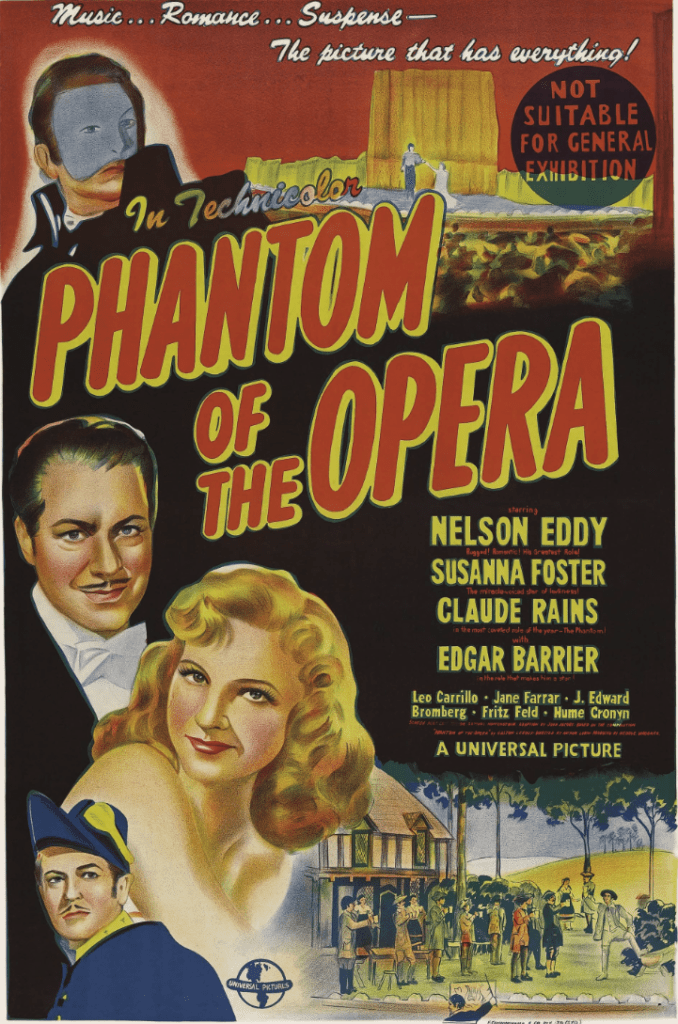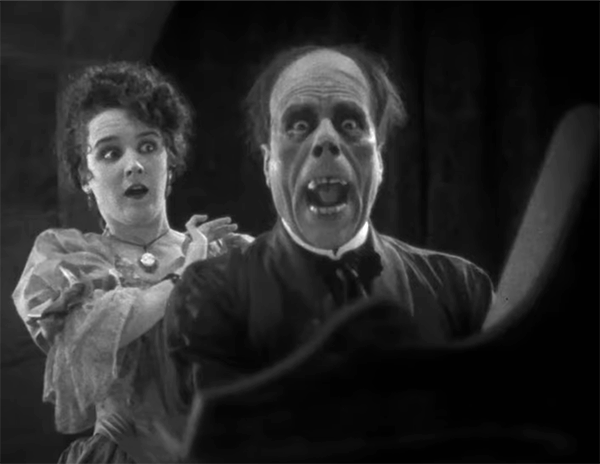
“The Phantom of the Opera” was written by Gaston Leroux and first appeared as a serialized work in the French magazine Le Gaulois in 1909. It is considered a masterpiece of Gothic horror literature. The complete work was published in book form in 1910.
It is a story that follows a lonely young girl, Christine, who is raised in the Paris Opera House after the death of her father. Before his death, Dad promises his daughter that she will be looked after by a “protective angel” of music, and she soon hears a voice who teaches her how to sing. Her protector – the deformed “ghost” that haunts the opera house – falls in love with his charge, and his love turns to terrible jealousy as Christine grows into a beautiful young girl and talented opera singer.
The story has been adapted in multiple ways for film, opera, and the theatre, but one stands out: the 1925 silent version featuring Lon Chaney, the “Man of a Thousand Faces,” as Eric the Phantom. It was released by Universal Pictures. This classic version was shot in black and white, although the film makers experimented with color to include single color tinting and an entire full-color sequence featuring a red-robed figure of death. The film was re-released in 1927 with added music and sound. The Christine in the 1925 version is played by Mary Philbin.



In 1943, an entirely new adaptation of Phantom of the Opera was introduced with Claude Rains as the Phantom and the singer Susanna Foster as Christine. This version was in full Technicolor. Its home studio was again Universal Pictures. Same Studio, different stories. The 1925 version adheres closely to Leroux’ version, which is much spookier.
Both films have one thing in common: the big reveal shot of the Phantom’s face. In the 1925 version, cinema critics have called it one of the most memorable moments in the history of all film. In the novel, the phantom is disfigured at birth: Leroux describes his face as resembling a skull. Chaney, famous for his makeup artist skills, stuffed wadding into his cheeks to highlight them. He also used wires inside of his nostrils to disfigure his nose and a set of false teeth to create an eerie smile.
Lastly, he painted the inside of his eye sockets black with white highlights under each eye and smeared his lips with greasepaint. The studio played up the possible effects, urging theatre owners to have smelling salts handy for the potential fainting customer.
The 1943 film changed the story somewhat. At its beginnings, the Phantom has a normal appearance. This changes when his face is disfigured by acid. The audience gets to see the results near the end of the film, and the face revealed is that of a normal man with burn scars on one side of his face. In this version, there is no haunted monster with a horrible face haunting the spooky underground since birth. There is, instead, a disappointed composer in need of a good plastic surgeon. In neither film does the Phantom get the girl.